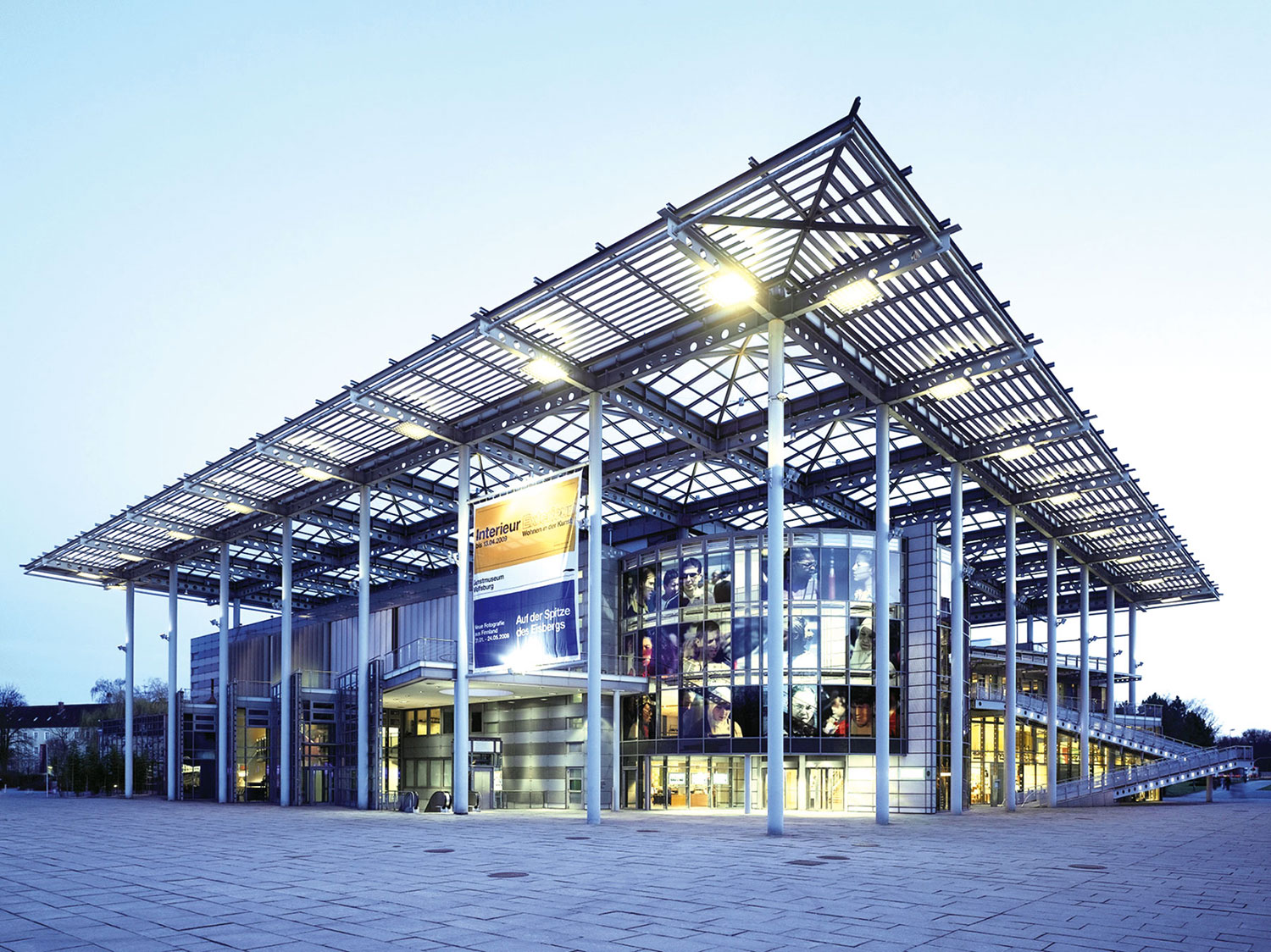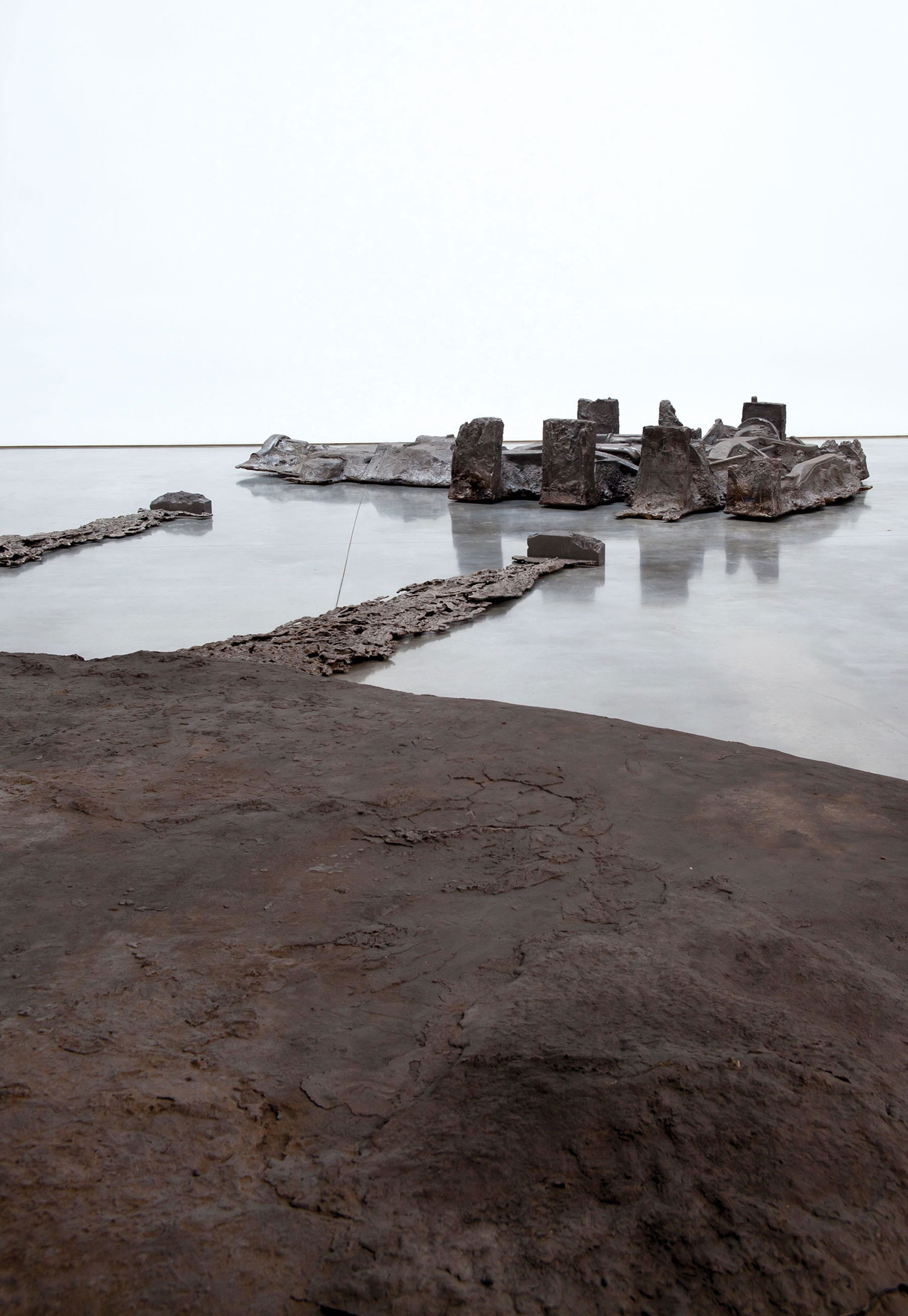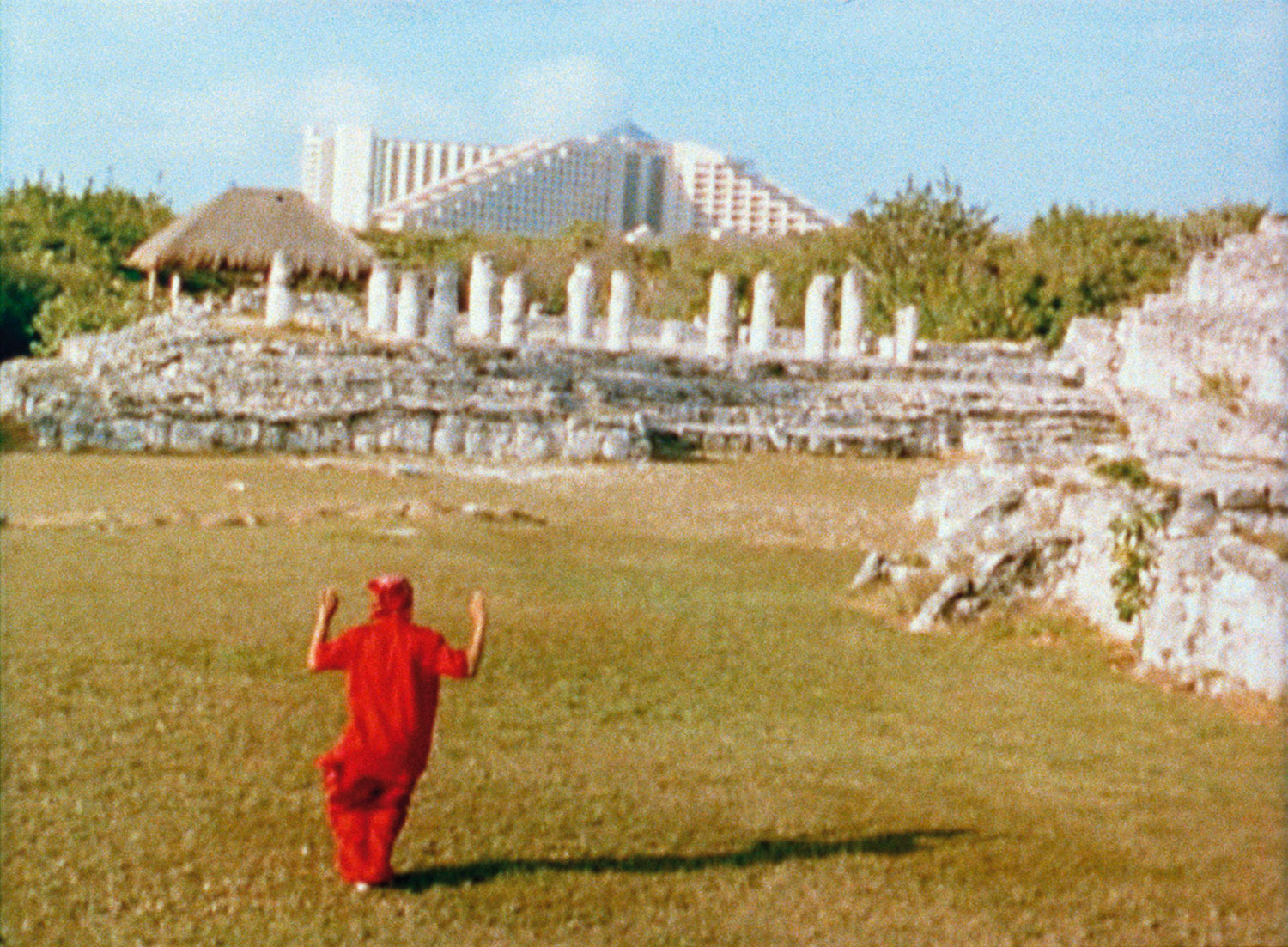
Figurative painting in Britain over the past two decades is a story of fragmentation, of individual accomplishment that has never coalesced into a discernibly British painting style. The practices of Chris Ofili, Peter Doig, Glenn Brown, Jenny Saville, Andrew Grassie and George Shaw illustrate some of the diverse techniques and concerns that have come out of British figurative painting to international attention in this time, and suggest that their practices are connected to international more than specifically national debates. The same is true of figurative painters who have emerged in the last few years, with Hurvin Anderson, Nigel Cooke, Dexter Dalwood, Chantal Joffe, Ged Quinn, Raqib Shaw and Lynette Yiadom-Boakye among the most prominent. Painting from Central and Eastern Europe, however, which has been the epicenter of much recent activity in figurative painting, has opened up new filters through which to look at current painting in Britain, revealing an interesting relationship between London and Scotland in the process.
The currents that have been swirling around much European figurative painting in recent years have been shaped by the ebbing tide of Communist regimes within Europe, starting with the Ładnie Group in Poland, followed by the Leipzig and Dresden schools, and most recently by the wave of painting from former Soviet Bloc countries spearheaded by the Romanian town of Cluj-Napoca. Whether the bleak-chic works of Ładnie’s members Wilhelm Sasnal, Marcin Maciejowski and Rafal Bujnowski from Poland, the strange and dreamy worlds of Tilo Baumgärtel, Matthias Weischer and Christoph Ruckhäberle in the former East Germany, or the dark and austere practices of Victor Man, Adrian Ghenie, Marius Bercea and Serban Savu from Romania, the experiences of emerging from oppressive or dysfunctional Communist control have clearly had a profound impact on the generation of figurative painters to have emerged in Europe since the fall of the Berlin Wall. Along with artists such as Alexander Tinei from Moldova, Vitaly Pushnitsky from Saint Petersburg, Budapest-based Zsolt Bodoni, and Daniel Pitín from Prague, the Romanians have virtually cornered the market for melancholic, brooding works produced with impressive technique and mired in socio-political complexity. Dehumanization, alienation and detachment characterize the emotional, physical, psychological and political state of civilization as depicted in the works of many of these Central and Eastern European artists, and their canvases, regularly in dark or muted palettes, are often filled with a sense of futility and existential angst.
Darkness and anomie are qualities that are shared by some of the leading lights of current British painting, exemplified by the work of Justin Mortimer, a London-based artist who has recently been producing some of the most powerful and accomplished paintings to have come to the international stage. Not for the faint hearted, his depictions of human suffering, pain, punishment and torture implicate almost every society around the world, whether ethnic cleansing in the former Yugoslavia, public hangings in the Middle East, lethal injection tables in the United States, or the specter of nuclear and biological warfare as it leaves the Cold War era and enters its new phase in Asia and the Middle East. His painterly realism, fusing traditional and academic techniques with vocabularies of recent avant-garde painting, have earned the admiration of many of the leading painters from Central and Eastern Europe — indeed, he is probably better known in the former Soviet Bloc than by his British peers — and so it comes as no surprise to discover that his Los Angeles gallerist, Mihai Nicodim, is himself Romanian and represents several key figures from post-Communist countries. At the Prague Biennale 5 this summer, alongside works by Romanian and Hungarian figurative painters, Mortimer presented two new works, one of which, entitled Vaccine (2011), depicted the head and naked torso of a weak and sickly young man against a dark black background, sucking a finger as if taking medication in a desperate bid to rid himself of some terrible virus. Mortimer’s vision of the modern condition is as disturbing as it is impressive.
Darkness also permeates the work of Scotland-born, London-based painter Christopher Orr, though it is mystery, Romanticism and the sublime rather than human misery that characterize his works. In one curious image entitled The Impulse (2010), a shadowy figure — either a woman in an old-fashioned dress or a man in a robe — bends over a rock or bundle next to a tree stump against a cloudy absinthe-colored backdrop. The figure’s forearms are bare and making a gesture, though to what end remains unclear. Ambiguity verges on the mystical in Silent One (2010), which features a couple dressed like colonial travelers standing on a rocky precipice staring into a dark crevice. Out of the darkness, the head of a bald man emerges, as if a decapitated floating apparition. Another work, Speak My Language (2010), also presented in Orr’s exceptional solo show at Hauser & Wirth in Zurich in 2010, features a man in a suit and tie drawing onto or incising into an unidentifiable log-like form, from which rays emanate like lasers across the virtually abstract background of browns, gold and rusts. Like a scene from a ’50s sci-fi movie, the painting fuses Cold War-era aesthetics with metaphysics in a somber yet alluring way.

Around the same time that Orr was completing his studies at the Royal College of Art in London early in the new millennium, fellow Scotsman Michael Fullerton was finishing his MA course at Glasgow School of Art. While pursuing very different agendas and techniques, the artists share a fascination with painting styles of the past that shape their own approaches to paint. For Fullerton, this primarily orbits around 18th-century portraiture, bringing an anachronistic language into the contemporary critical arena and giving it a makeover with his razor-sharp political commentary and darkly mischievous air.
Often making connections between gender, sexuality, sex, politics, business, technology and the media, Fullerton’s paintings are a peculiar blend of broadsheet investigative journalism and tabloid outrage, involving both homage and the debunking of public figures, and the naming and shaming of those behind scandals and injustices. In Why Your Life Sucks (Alan Turing) (2010) Fullerton presents a portrait of British computer pioneer and World War II code-breaking hero Alan Turing, who in 1952 was convicted of homosexuality and gross indecency with a male, for which he was sentenced to chemical castration. Spiraling into despair, Turing is said to have dipped an apple in cyanide and taken a bite. The extended caption for the painting explains Turing’s sad demise and berates the British establishment for treating him in this way before making a connection between the manner of his suicide and the logo of the computer giant Apple. In other works, Fullerton depicts Roberto Calvi, an Italian banking chief who was found hanged in suspicious circumstances from Blackfriars Bridge in London in 1982; a current member of a Glaswegian loyalist military band; the first democratically elected president of Poland, Lech Walesa; and two women allegedly involved in an affair in the offices of global security company Lockheed Martin. In The Bitch Messed With His Head (2010) Fullerton depicts Mirren Barford, fiancée of Jock Lewes, co-founder of the British elite special air services (S.A.S.) who was killed in action before they could marry. According to Fullerton, Lewes was a jealous man, once writing a letter to his brother falsely accusing him of trying to steal Barford from him. Fullerton’s painting, in contrast to its provocative title and mildly obscure back-story, is an enchanting depiction of a young lady, who, as far as we know, was irreproachable in her conduct. For the artist, portraiture, like the media, is a vehicle for communicating truth, for questioning apparent truth and for distorting it too.
A third Scottish figurative painter of the same generation as Orr and Fullerton is Kaye Donachie, who graduated from the Royal College of Art at the end of the ’90s. In the opening years of the new millennium, Donachie was painting ethereal scenes of longhaired youths hanging out at night in woods and caves, sharing certain neo-Romantic coming-of-age themes with painters such as Jules de Balincourt, Hernan Bas and Steven Shearer. Over the past few years, Donachie has increasingly focused on single figures that are primarily female and usually beyond their teenage years. Her palette, while remaining exciting and unconventional, has transformed from otherworldly oranges and yellows to more muted pastel tones electrified by unexpected bursts of acidic hues. Bathed in shadows and often with ghostly double-exposure-like faces combined in the same image or heads wistfully and cinematically emerging from landscapes, Donachie’s paintings are wonderfully strange reveries, elegiac painterly nocturnes that bring forth a gentle but powerful lyricism and poetry from behind the veil of modernism. Some of the young women depicted in these works are identified or identifiable, with Edna St. Vincent Millay, the renowned 20th-century American poet, playwright and feminist making an occasional appearance along with lines from her journal providing the titles for many of Donachie’s works.
The Scottish connection continues yet further in the work of Graham Little, the Dundee-born, London-based artist who graduated from Goldsmiths in the late ’90s. His exquisite and meticulous color pencil and gouache works of fashionable and attractive women — often sourced from fashion magazines past and present — take the transient modes of clothes, hair, accessories and the styling of fashion shoots into the history of portrait painting with both awkwardness and grace. The enforced gazes of the fashion models hold the viewer back from assigning profound psychological significance to their expressions, though a range of emotional states from the assertive and aloof to the pensive and self-conscious can be discerned. Darkness and shadows play a key role in Little’s resonant and sumptuous images, and while they never become threatening, they bring an element of drama, mystery, intrigue and sobriety into the various artificial scenarios and sets in which the women pose, going some way towards unsettling the affluence, luxury and obsession with appearance that high-end fashion can engender.

The combination of darkness, melancholy and graceful charm that loosely connects the practices of Orr, Fullerton, Donachie and Little can also be found in the work of English artist and another Royal College graduate of the late ’90s, Gillian Carnegie. While portraiture and human figures are prominent in the work of current British figurative painting, they are few and far between in Carnegie’s recent works, with a solitary seated female the only painted figure present in her solo show at Andrea Rosen in New York this spring. It is despondency, austerity and vintage allure that pervade the beautiful grand old European buildings, spiral staircase, black cat on a stairwell and leafless tree that were on display, all rendered in a muted palette of ash and dull creams. Carnegie’s works speak of an elegant but joyless world in which beauty and pleasure seem to be sought within sorrow and lugubrious grays. It is, perhaps, a gentle, almost genteel take on emptiness, detachment and anomie.
The emergence of Scottish-born, London-based painter Caroline Walker, a recent graduate of both Glasgow School of Art and the Royal College, suggests the Scotland-London connection for subdued yet elegant figurative painting might be an axis with yet more talent to offer. Often depicting lone female figures in dreary though regularly exclusive domestic interiors, her canvases convey an oddly charged atmosphere, poised between the tedium of housework, the boredom of rainy days spent alone at home, and something darker, weirder and more theatrical altogether.
In the work of some of the leading British figurative painters of today — a generation primarily born in the early ’70s and powered by Scotland and London — the darkness and melancholy that are characteristic of much current Central and Eastern European painting are also to be found, though with a tendency towards the stylish, graceful, seductive and charming. With techniques and imagery that look to the past as much as to the present, there is, perhaps paradoxically, an element of oblique nostalgic yearning and a reflexive aesthetic desire for former elegance alongside a conscious acceptance that the past was as full of unhappiness, ugliness, crassness and wrongdoing as the present.





